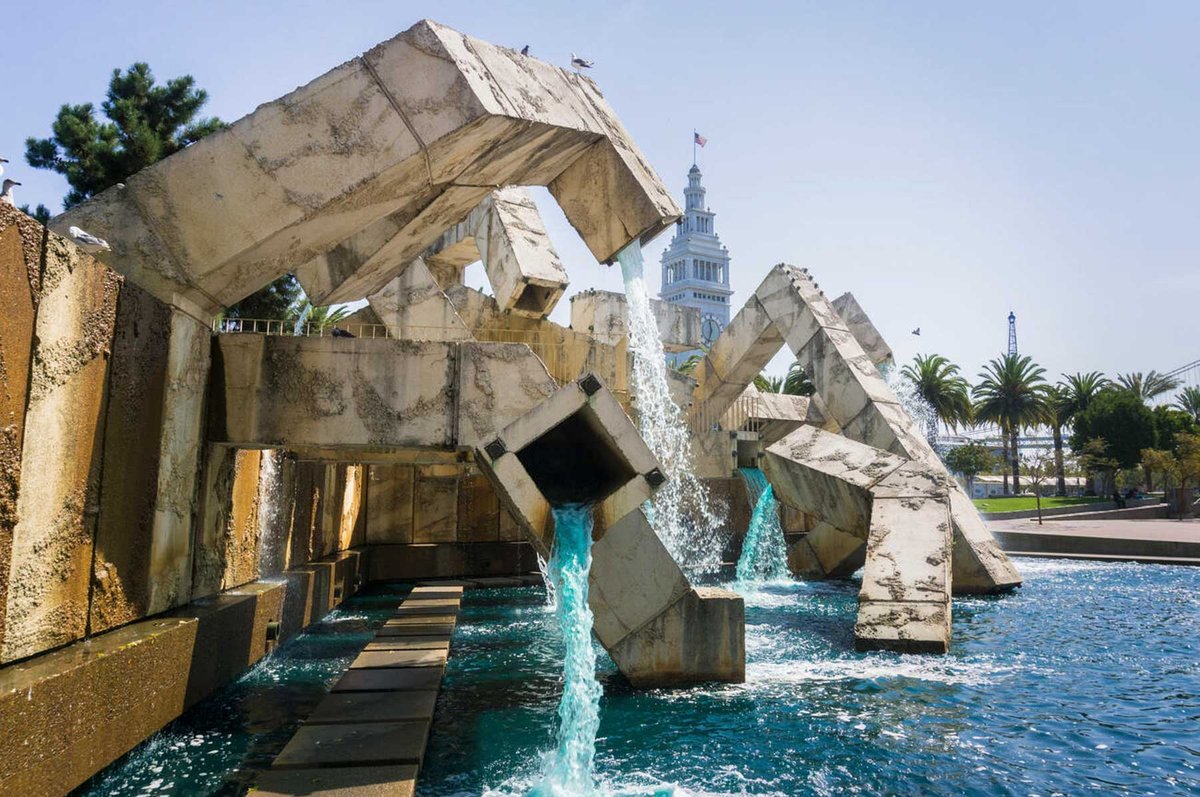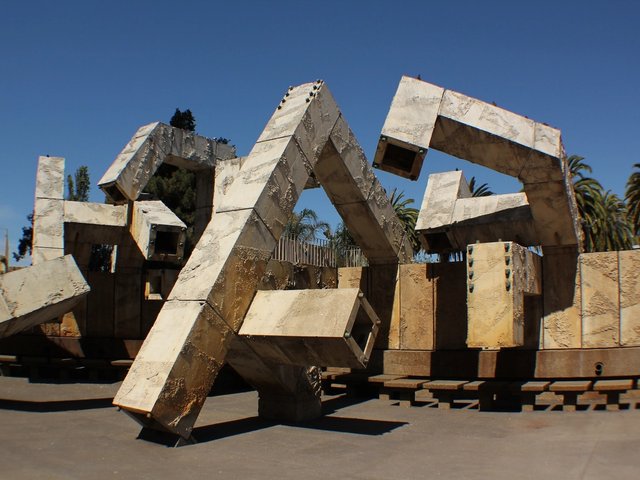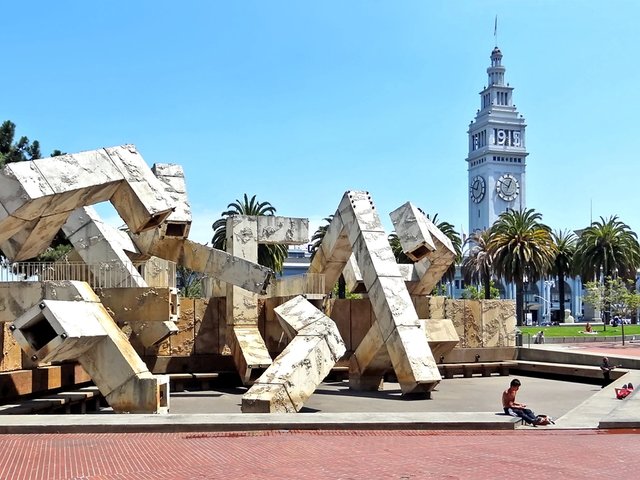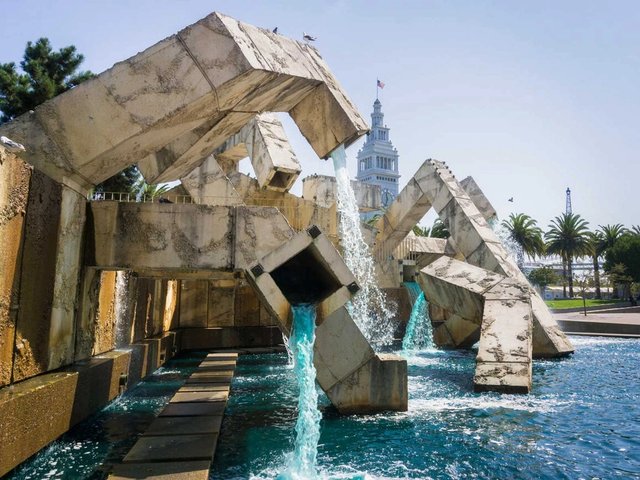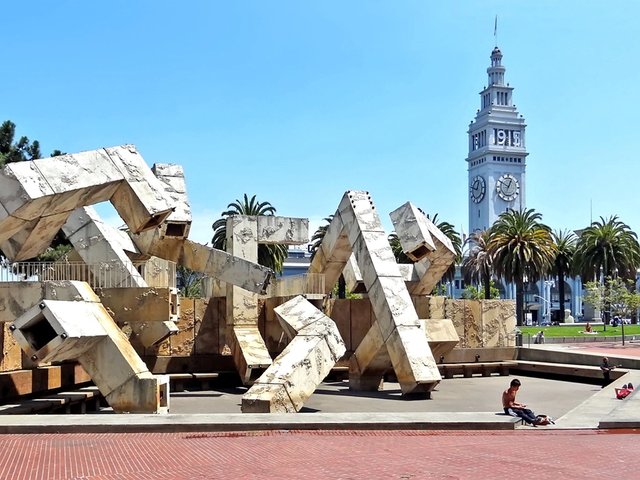San Francisco’s famed Vaillancourt Fountain may soon meet an undignified fate at the business end of a wrecking ball. The fountain, also known as Québec libre! (free Quebec!), is conspicuously absent from renderings for a proposed redevelopment of Embarcadero Plaza, where it has stood for 54 years. If the redevelopment goes forward along those lines, the giant sculpture, designed by the Quebec artist Armand Vaillancourt and conceived as part of a late 1960s urban renewal effort, will be swept away.
City officials are adamant that the fountain’s fate is far from sealed and that the redevelopment renderings are merely illustrative. Regardless, the 95-year-old Vaillancourt and members of his family are travelling to San Francisco to meet with local politicians and attend a public event in collaboration with Docomomo, a non-profit devoted to Modernist architecture.
In preserving the fountain, Vaillancourt can count among his allies public-art enthusiasts, Brutalism aficionados, The Cultural Landscape Foundation (TCLF) and local skateboarders. All are mobilising in defence of one of San Francisco’s most controversial public monuments.
The fountain is the centrepiece of a public plaza designed by the American landscape architect Lawrence Halprin, who sat on the three-person jury that selected Vaillancourt’s proposal from among the finalists. Halprin likened Vaillancourt’s design to a “modern-day Trevi Fountain” and saw it as an inseparable part of his plan for the plaza.
Charles A. Birnbaum, the president and chief executive of TCLF, describes Halprin’s landscape designs as “revolutionary” and “set apart by strong, expressive forms that evoked the structures and processes of nature, often with terracing enlivened by flowing water. By animating a wide array of urban areas (including industrial zones and spaces around freeways) with designs that were artistically composed and ecologically sensitive, Halprin showed that landscape architecture could be a force—indeed the dominant force—in reinvigorating American cities.”
The Vaillancourt Fountain, completed in 1971, is a monumental Modernist sculpture—roughly 40 ft tall and composed of precast concrete square tubes that jut out like tentacles at sharp angles in a bewildering variety of directions. There are bridges, walkways and stairs within the structure that allow the public to interact with it. The work is very clearly a fountain when water is flowing through it—as was intended—but in recent years, this has often not been the case. Without this key feature, the fountain’s purpose, artistry and role in the urban environment appear ambiguous.
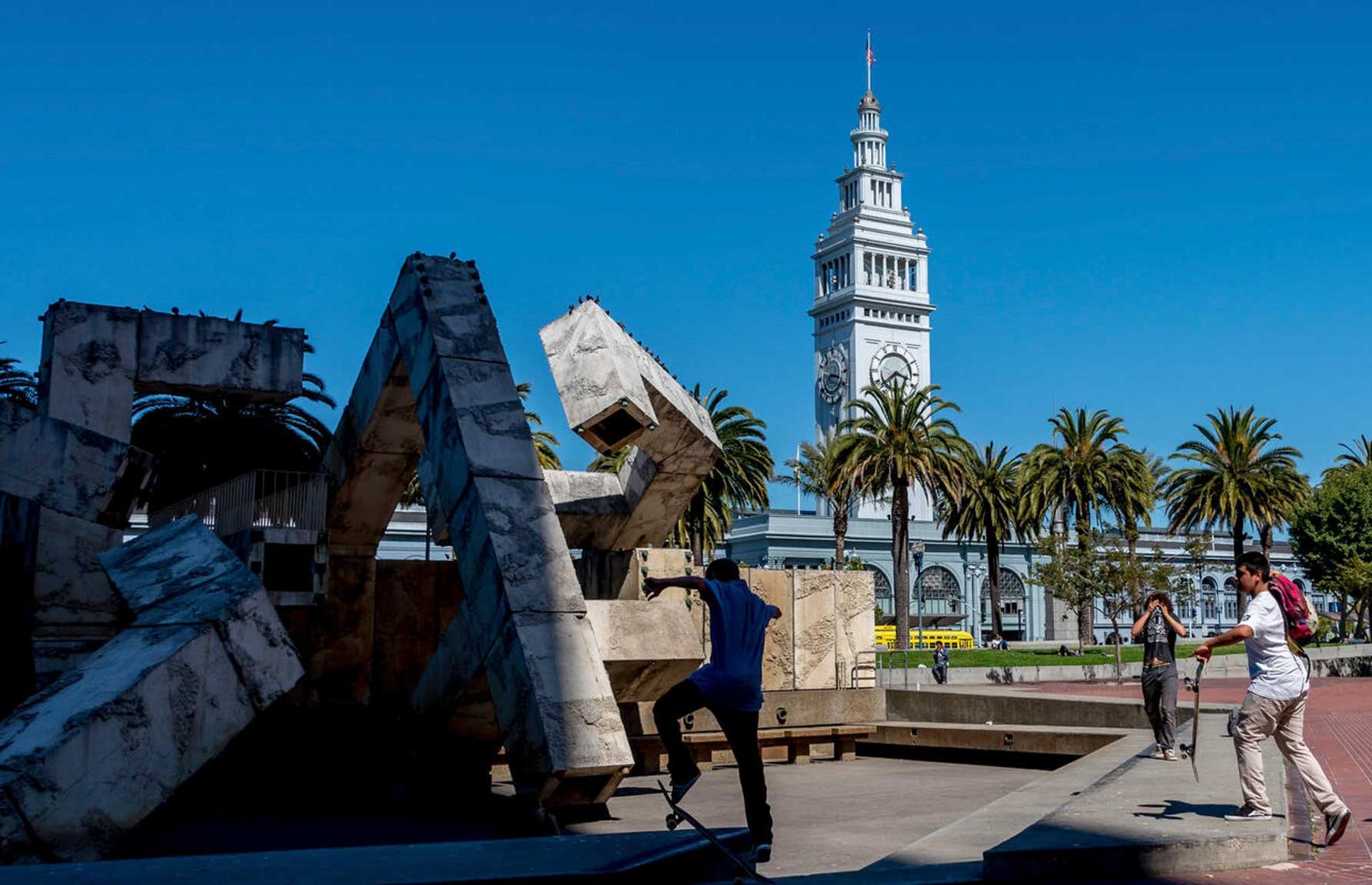
Skateboarders on the plaza
© Shelly Rivoli/Alamy Stock Photo
Context elimination
Ever since the 1991 demolition of the Embarcadero Freeway, the fountain has been disconnected from its original context. As conceived, the sculpture provided a screen of sorts, blocking the view of the elevated freeway that once ran behind it. The fountain’s concrete tubes referenced the pillars on which the highway was built.
Yet the fountain has been controversial since day one. The late architecture critic Allan Temko famously described it as resembling something “deposited by a concrete dog with square intestines”. One of the first serious proposals to demolish the sculpture came with the decision to tear down the freeway and redevelop the Embarcadero. There have been several more threats to the fountain since then, with justifications ranging from the cost of its electricity and its water consumption to criticism of its size and Brutalist aesthetic.
Whether demolishing it is even possible is hard to tell. The fountain falls under the jurisdiction of both the San Francisco Arts Commission (SFAC) and the city’s Recreation and Park Department (Rec); the former oversees its sculptural elements, while the latter looks after its mechanical components. According to SFAC, Rec is leading the redevelopment initiative and working closely with other city agencies as much as it is with private partners on the plaza redevelopment project.
In October 2024, Rec endorsed a proposal for fundraising and design work on the plaza. Its commissioners voted unanimously to accept $2.5m from the real-estate investment trust BXP to support park design and project-management services. In turn, the city is expected to raise $15m in public funding for what is estimated to be a $30m project. The redevelopment proposes a new five-acre park that will replace existing public spaces with a more cohesive overall plan. Preliminary renderings show a large green space with playgrounds, an outdoor performance venue and monumental sculptures. The hope is that the new public space will better integrate the city’s tourist-focused waterfront with its struggling financial district. On 4 March of this year, the city’s supervisors unanimously approved the creation of a public-private partnership between BXP and Rec.
As for Vaillancourt, the artist has expressed a range of thoughts on the prospect of his fountain being destroyed. Last year, he reminisced fondly about his days in San Francisco, and of time spent with members of the Black Panthers and the American Indian Movement. Asked if anyone from the City of San Francisco or BXP had attempted to contact him about their potential plans for his sculpture, Vaillancourt said no.
According to Vaillancourt’s son, no one from the city, its agencies or BXP has directly contacted the artist. SFAC representatives say they were last “in dialogue” with Vaillancourt in the 1990s, when the area around Embarcadero Plaza was revamped after the freeway was torn down.
Flow dough
The fountain was drained in June 2024, and the city has since installed padel courts in the plaza next to it, which gives Vaillancourt’s sculpture the appearance of a forgotten ruin. But if the city and developers are willing to spend $30m rejuvenating a public space, might they not also restore the Vaillancourt Fountain? According to Rec, the cost of restoring and upgrading it would be $3m.
Rec will hold public meetings in the coming months to collect feedback about the Embarcadero Plaza redevelopment project and the future of the Vaillancourt Fountain. In the meantime, skateboarders have been fondly making paper tracings of the bricks that make up the Halprin-designed plaza surrounding the fountain—a favourite spot to skate since the 1990s. At least two online petitions have been steadily collecting thousands of signatures to save the fountain and plaza, and TCLF has declared the plaza a “threatened nationally significant cultural landscape” and is trying to get it listed on the National Register of Historic Places.
James Garland, the founder of Fluidity—a Los Angeles-based water-feature design and engineering firm—says he believes restoring the Vaillancourt Fountain is the right move, and far cheaper than building a new, similarly sized fountain. He says that proposing to demolish such a striking sculpture is ironic at a time when Brutalism is enjoying a popular resurgence. “Its controversy is an asset, not a demerit,” he adds. “Who needs a boring or predictable work of art?”


